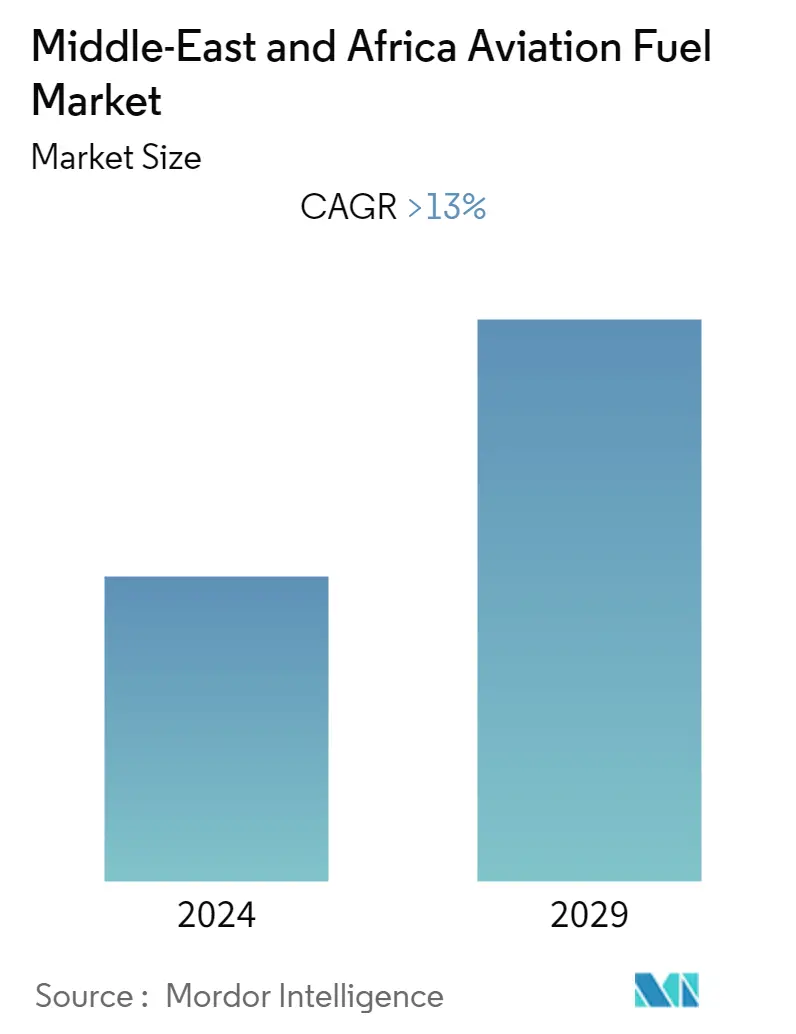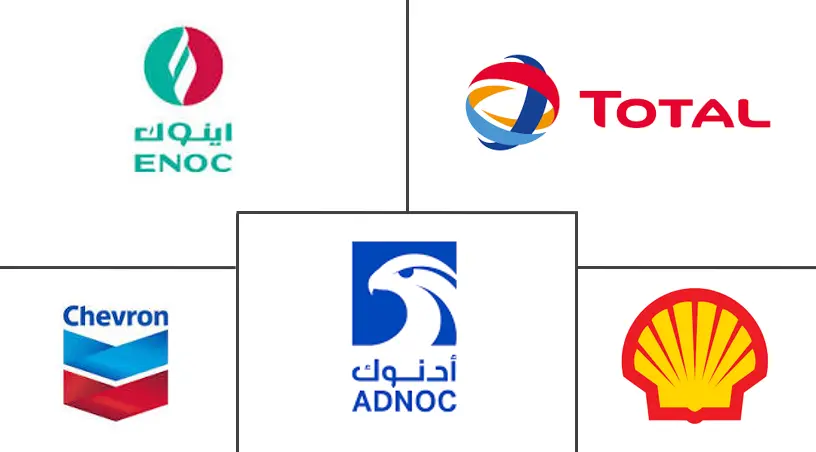
| Study Period | 2019 - 2029 |
| Base Year For Estimation | 2023 |
| Forecast Data Period | 2024 - 2029 |
| Historical Data Period | 2019 - 2022 |
| CAGR | 13.00 % |
| Market Concentration | Low |
Major Players
*Disclaimer: Major Players sorted in no particular order |
MEA Aviation Fuel Market Analysis
The aviation fuel market in the Middle East and Africa is anticipated to register a CAGR of more than 13% during the forecast period.
The market was negatively impacted by the outbreak of COVID-19 due to regional lockdowns and flight restrictions. Currently, the market has reached pre-pandemic levels.
- The increasing number of air passengers, on account of the cheaper airfare in recent times, stronger economic conditions, and increasing disposable income, are among the major driving factors for the market. Ongoing and upcoming fighter jet deals in different countries in the region are also expected to increase aviation fuel demand further.
- However, the high and volatile cost of aviation fuel is expected to restrain the market.
- Countries in the Middle-Eastern region need over 2,600 new aircraft in the next 20 years to cater to the increasing number of air travelers in the region. With this large-scale, opportunities are expected for the aviation fuel market players.
- With the largest market size in the Middle East and Africa, the United Arab Emirates is leading the market in the region and is likely to continue its dominance.
MEA Aviation Fuel Industry Segmentation
Aviation fuels are petroleum-based fuels or mixtures of petroleum and synthetic fuels that are used to power airplanes. They are subject to stricter regulations than fuels used for stationary purposes, such as heating and driving. They contain additives to improve or preserve characteristics vital to fuel management or performance.
In the Middle East and Africa, the aviation fuel market is segmented by fuel type, application, and geography. By fuel type, the market is segmented into air turbine fuel, aviation biofuel, and AVGAS. By application, the market is segmented into commercial, defense, and general aviation. The report also covers the market size and forecasts for the Aviation fuels market across the major countries in the region. For each segment, the market sizing and forecasts have been done based on revenue (USD billion).
| Air Turbine Fuel (ATF) |
| Aviation Biofuel |
| AVGAS |
| Commercial |
| Defense |
| General Aviation |
| United Arab Emirates |
| Saudi Arabia |
| Qatar |
| Egypt |
| South Africa |
| Rest of Middle-East and Africa |
Middle-East and Africa Aviation Fuel Market Size Summary
The aviation fuel market in the Middle East and Africa is poised for significant growth, driven by an increase in air travel due to affordable airfare, robust economic conditions, and rising disposable incomes. The market is recovering from the setbacks caused by the COVID-19 pandemic and is now back to pre-pandemic levels. The demand for aviation fuel is further bolstered by ongoing and upcoming military aircraft deals in the region. However, the market faces challenges from the high and fluctuating costs of aviation fuel. The United Arab Emirates stands out as a dominant player in the region, supported by its substantial air traffic, extensive crude oil production, and significant refining capacity. The UAE's national carriers, Emirates and Etihad, play a crucial role in maintaining this dominance.
The commercial aviation sector is a major consumer of aviation fuel, accounting for a significant portion of airline operating expenses. The sector's growth is influenced by geopolitical factors, such as the Russia-Ukraine conflict, which has led to increased oil prices due to OPEC+ supply cuts. This situation could impact the demand for aviation fuel in the commercial sector, which is the primary user of this commodity. Countries like Saudi Arabia and Qatar are making substantial investments in expanding their aircraft fleets, further driving the demand for aviation fuel. The market is moderately consolidated, with key players including Emirates National Oil Company, Chevron Corporation, Shell PLC, and TotalEnergies SE. Initiatives like the partnership between Masdar, Siemens Energy, and TotalEnergies to produce sustainable aviation fuel highlight the industry's shift towards more sustainable practices.
Middle-East and Africa Aviation Fuel Market Size - Table of Contents
1. MARKET SEGMENTATION
-
1.1 Fuel Type
- 1.1.1 Air Turbine Fuel (ATF)
- 1.1.2 Aviation Biofuel
- 1.1.3 AVGAS
-
1.2 Application
- 1.2.1 Commercial
- 1.2.2 Defense
- 1.2.3 General Aviation
-
1.3 Geography
- 1.3.1 United Arab Emirates
- 1.3.2 Saudi Arabia
- 1.3.3 Qatar
- 1.3.4 Egypt
- 1.3.5 South Africa
- 1.3.6 Rest of Middle-East and Africa
MEA Aviation Fuel Market Research FAQs
What is the current Middle-East and Africa Aviation Fuel Market size?
The Middle-East and Africa Aviation Fuel Market is projected to register a CAGR of greater than 13% during the forecast period (2025-2030)
Who are the key players in Middle-East and Africa Aviation Fuel Market?
Emirates National Oil Company, Chevron Corporation, Abu Dhabi National Oil Company, Royal Dutch Shell PLC, Shell Plc and TotalEnergies SE are the major companies operating in the Middle-East and Africa Aviation Fuel Market.


